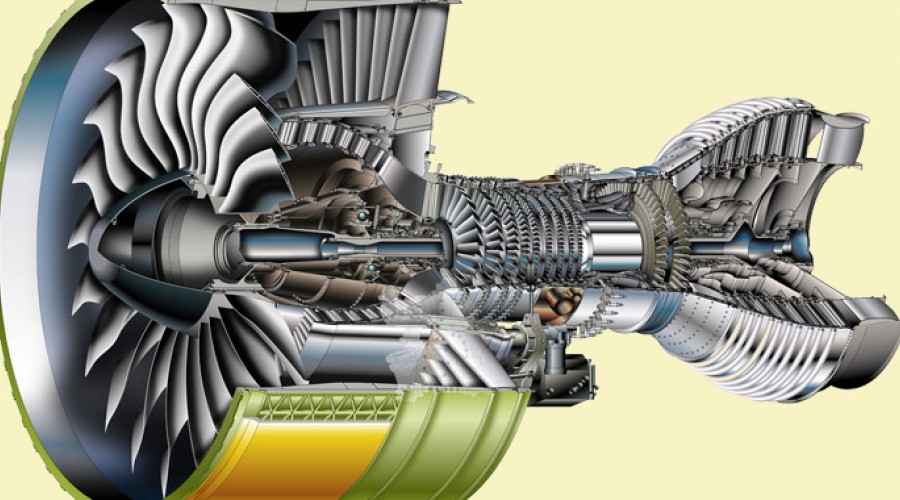
Unlocking Creativity: Why Children are Drawn to Building Their Own Engine Models
In the realm of childhood curiosity, there exists a magnetic allure to constructing engine models. This fascination isn't mere happenstance; it is deeply rooted in the cognitive and developmental benefits that building engine models bestows upon young minds.
Hands-On Learning Experience
Children are naturally drawn to hands-on activities, and building engine models provides a tactile learning experience that transcends traditional classroom settings. The tangible nature of assembling components, understanding their functions, and witnessing the result of their efforts fosters a profound connection between theoretical knowledge and practical application.
Enhanced Problem-Solving Skills
As tiny fingers meticulously piece together components, children encounter and overcome a myriad of challenges. From deciphering assembly instructions to troubleshooting unexpected hiccups, every step demands critical thinking. This process not only sharpens their problem-solving skills but also instills a resilient mindset that views challenges as opportunities for growth.
Fostering a Passion for STEM
The allure of engine models isn't confined to the joy of creation; it extends to igniting a passion for science, technology, engineering, and mathematics (STEM). Through the hands-on exploration of these miniature marvels, children gain a sneak peek into the world of mechanics and engineering. This early exposure lays the groundwork for future STEM enthusiasts, potentially shaping the innovators and problem solvers of tomorrow.
Understanding Cause and Effect
Building engine models provides a tangible lesson in cause and effect. As children observe how their actions impact the functionality of the model, they develop a nuanced understanding of the relationships between different components. This foundational knowledge becomes a stepping stone for comprehending more complex scientific principles in their academic journey.
Encouraging Creativity and Imagination
In the realm of engine models, creativity blossoms. Children aren't confined to following rigid instructions; they are encouraged to personalize their creations. From choosing color schemes to experimenting with modifications, every decision becomes an avenue for self-expression. This freedom fosters a sense of ownership and pride in their creations, nurturing a positive attitude towards learning.
Inspiring Future Innovators
The process of building engine models serves as a gateway to innovation. It sparks curiosity about how things work and lays the groundwork for a mindset that seeks to understand and improve upon existing designs. These early experiences can sow the seeds for a future generation of inventors and engineers, propelling society forward through their groundbreaking ideas.
Building Essential Motor Skills
Beyond the intellectual benefits, constructing engine models contributes significantly to the development of fine motor skills. The precise manipulation of small components demands a level of dexterity that refines hand-eye coordination. This physical aspect of the activity complements the cognitive benefits, offering a holistic developmental experience.
Cultivating Patience and Perseverance
The intricacies of building engine models require patience and perseverance. Children learn that success often comes after overcoming challenges and dedicating time and effort to a task. This invaluable lesson extends beyond the realm of engine models, shaping their approach to future endeavors.
Conclusion: Nurturing Minds, One Engine Model at a Time
In the symphony of childhood development, building engine models plays a harmonious tune. It goes beyond being a mere pastime; it is an educational endeavor that intertwines the realms of creativity, critical thinking, and motor skills development. As children engage in this hands-on pursuit, they are not just constructing engine models; they are building the foundations of a bright and innovative future.


8 Comment(s)
FB88 cung cấp nhiều chương trình khuyến mãi cho người mới tham gia, tôi cảm thấy rất được chào đón.
Trang web của FB88 thiết kế rất dễ nhìn, tôi có thể tìm thấy mọi thứ chỉ trong vài giây.
FB88 cung cấp rất nhiều loại trò chơi bài, tôi luôn tìm được trò chơi phù hợp với mình.
Trải nghiệm chơi game trên FB88 rất mượt mà, gần như không có độ trễ.
FB88 luôn cung cấp các sản phẩm game chất lượng cao và dịch vụ khách hàng tốt.
Chức năng của nền tảng rất ổn định, gần như không có hiện tượng giật lag.
Trường Tiểu học Nguyễn Trung Trực được thành lập năm 1985 có địa chỉ tại 9A Phạm Hồng Thái, phường Nguyễn Trung Trực, quận Ba Đình, Hà Nội (Nay thành phường Trúc Bạch). Trường hoạt động dưới sự quản lý của UBND quận Ba Đình và Phòng Giáo dục và Đào tạo Ba Đình. Trường được xây dựng khang trang trên diện tích hơn 3000 m2 với đủ các phòng học và phòng chức năng cho các hoạt động học tập, vui chơi, giải trí của học sinh.
Địa chỉ: Số 9A Phạm Hồng Thái - Ba Đình - Hà Nội
Email: c1nguyentrungtruc-bd@hanoiedu.vn
website: https://c1nguyentrungtruc.badinh.edu.vn/
Điện thoại: 438261441
Trường Tiểu học Nguyễn Trung Trực được thành lập năm 1985 có địa chỉ tại 9A Phạm Hồng Thái, phường Nguyễn Trung Trực, quận Ba Đình, Hà Nội (Nay thành phường Trúc Bạch). Trường hoạt động dưới sự quản lý của UBND quận Ba Đình và Phòng Giáo dục và Đào tạo Ba Đình. Trường được xây dựng khang trang trên diện tích hơn 3000 m2 với đủ các phòng học và phòng chức năng cho các hoạt động học tập, vui chơi, giải trí của học sinh.
Địa chỉ: Số 9A Phạm Hồng Thái - Ba Đình - Hà Nội
Email: kumu.io@kumu.io
website: Https://kumu.io/NhacaiFB88betB88S/nhacaifb88betb88s#nhacaifb88betb88s
Điện thoại: 438261441
Trường Tiểu học Nguyễn Trung Trực được thành lập năm 1985 có địa chỉ tại 9A Phạm Hồng Thái, phường Nguyễn Trung Trực, quận Ba Đình, Hà Nội (Nay thành phường Trúc Bạch). Trường hoạt động dưới sự quản lý của UBND quận Ba Đình và Phòng Giáo dục và Đào tạo Ba Đình. Trường được xây dựng khang trang trên diện tích hơn 3000 m2 với đủ các phòng học và phòng chức năng cho các hoạt động học tập, vui chơi, giải trí của học sinh.
Địa chỉ: Số 9A Phạm Hồng Thái - Ba Đình - Hà Nội
Email: kumu.io@kumu.io
website: Https://kumu.io/NhacaiFB88betB88S/nhacaifb88betb88s#nhacaifb88betb88s
Điện thoại: 438261441
Trường Tiểu học Nguyễn Trung Trực được thành lập năm 1985 có địa chỉ tại 9A Phạm Hồng Thái, phường Nguyễn Trung Trực, quận Ba Đình, Hà Nội (Nay thành phường Trúc Bạch). Trường hoạt động dưới sự quản lý của UBND quận Ba Đình và Phòng Giáo dục và Đào tạo Ba Đình. Trường được xây dựng khang trang trên diện tích hơn 3000 m2 với đủ các phòng học và phòng chức năng cho các hoạt động học tập, vui chơi, giải trí của học sinh.
Địa chỉ: Số 9A Phạm Hồng Thái - Ba Đình - Hà Nội
Email: s666@s666s666s.com
website: Https://s666s666s.com/
Điện thoại: 438261441
Trường Tiểu học Nguyễn Trung Trực được thành lập năm 1985 có địa chỉ tại 9A Phạm Hồng Thái, phường Nguyễn Trung Trực, quận Ba Đình, Hà Nội (Nay thành phường Trúc Bạch). Trường hoạt động dưới sự quản lý của UBND quận Ba Đình và Phòng Giáo dục và Đào tạo Ba Đình. Trường được xây dựng khang trang trên diện tích hơn 3000 m2 với đủ các phòng học và phòng chức năng cho các hoạt động học tập, vui chơi, giải trí của học sinh.
Địa chỉ: Số 9A Phạm Hồng Thái - Ba Đình - Hà Nội
Email: s666@s666s666s.com
website: Https://s666s666s.com/
Điện thoại: 438261441
Insightful and so easy to understand. I finally feel like I get it.
Leave a comment